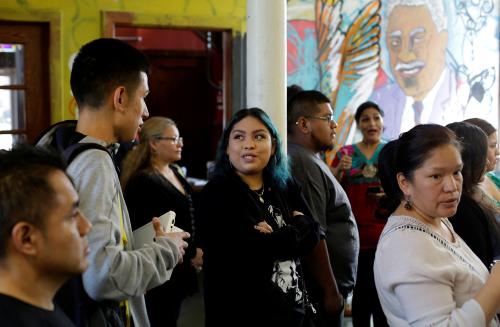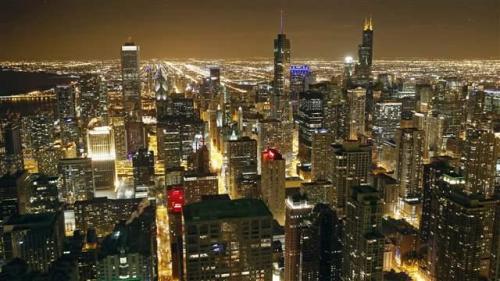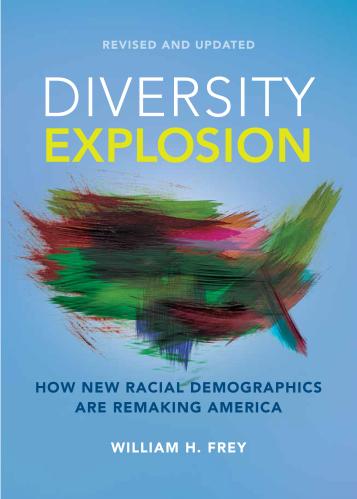As we approach the end of the 2010s, the biggest cities in the United States are experiencing slower growth or population losses, according to new census estimates. The combination of city growth declines and higher suburban growth suggests that the “back to the city” trend seen at the beginning of the decade has reversed.
These trends are consistent with previous census releases for counties and metropolitan areas that point to a greater dispersion of the U.S. population as the economy and housing market pick back up, perhaps propelled by young adult millennials who may be finally departing dense urban cores as they make a delayed entrance into marriage and the housing market.
The new census statistics provide estimates for city populations annually between 2010 and 2018. They show that the average annual growth for the nation’s 87 cities with populations over a quarter million have slipped to 0.69% in 2017-2018—down from 0.76% the previous year, and from 1.21% in 2011-2012, the highest average growth since the Great Recession. Among the 87 largest metros, 66 exhibited lower growth in the last year than in 2011-2012 (download Table A).

These slowdowns were especially pronounced in the biggest cities. Among the largest 22, all but two (Jacksonville, Fla. and Fort Worth, Texas) showed lower growth last year than in 2011-2012. Twelve of the cities displayed their lowest growth since 2010, including northern cities like New York City and Boston but also other pricey coastal cities like San Francisco and Sun Belt growth centers like Dallas. Chicago, the nation’s third largest city, has now registered four straight years of population loss. In addition to Chicago, New York City and San Jose were other cities with populations over one million to register losses last year.

Moreover, several fast-growing cities showed their growth levels decline. San Antonio’s enviable growth rate of 1.38% in 2017-2018 still represented a fall from its previous rate of around 2% earlier in the decade. Similarly Charlotte, N.C., whose growth previously exceeded 2% per year, registered a 2017-2018 growth rate of 1.53%. Of course, several big cities did enjoy recent growth upticks. Examples are Sacramento, Calif., Tucson, Ariz., and Henderson, Nev., but these were in the vast minority.
Another aspect of the big city growth slowdown is the increased number of cities that are losing population. In 2017-2018, as in the year before, 20 of the 87 big cities lost population (download Table B). New York City led all cities in losses at -39,500, the second straight year with a major loss. In some respects, New York epitomizes the reversal from beginning of the decade city magnetism. For the first three years of this decade, New York—by far the nation’s largest city—led all others in population gains at levels of 50,000-80,000 per year. In fact, in 2011-2012, only four of the 87 big cities—Detroit, Toledo, Cleveland, and Buffalo—showed population losses.
One consequence of big city population declines is the return of suburbanization, which was muted in the earlier years of this decade. This is illustrated in Figure 3, which shows average annual city and suburb growth rates for large metropolitan areas (with populations exceeding one million) in the nation’s South and West “Sun Belt” region, and its Northeast and Midwest “Snow Belt” region.

In both regions, city growth exceeded suburban growth in the early years of this decade, where Sun Belt growth in both cities and suburbs exceeded Snow Belt growth. As the decade wore on, city growth declined in both mega-regions while suburban growth remained higher. This is evident when looking at the individual metro areas in each region (download Table C). In 2011-2012, city growth exceeded suburb growth in 19 of the 34 Sun Belt metros, and in eight of the 19 Snow Belt metros. However, in 2017-18 the city growth advantage appeared in just nine Sun Belt metros and two Snow Belt metros. Among these 11 areas that still registered city growth advantages are: Los Angeles, Washington, D.C., San Francisco, Denver, and Boston.
In many respects, the city growth dominance earlier in the decade was an aberration of historical patterns— perhaps a result of the down housing market following the Great Recession, and the “stuck in place” millennial generation. Now, the new census data suggest that earlier suburbanization patterns are re-emerging.
These new statistics make plain that the city growth boom, evident at the beginning of the decade, continues to dissipate. Still, when viewed from a decade long perspective, the 2020 census will likely show greater city growth in the 2010-2020 period than in the prior ten-year period (2000-2010 was a decidedly down decade for cities). Already 54 of the nation’s 87 big cities have gained more people from 2010 through 2018 than they did in the entire 2000-2010 decade. But this really reflects the growth surge in the early 2010s—a surge that continues to fall off.






Commentary
Big city growth stalls further, as the suburbs make a comeback
May 24, 2019